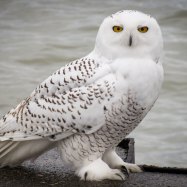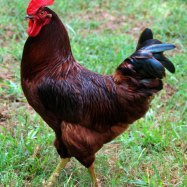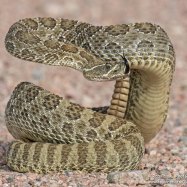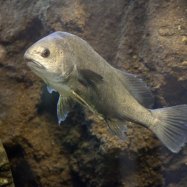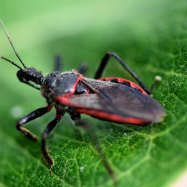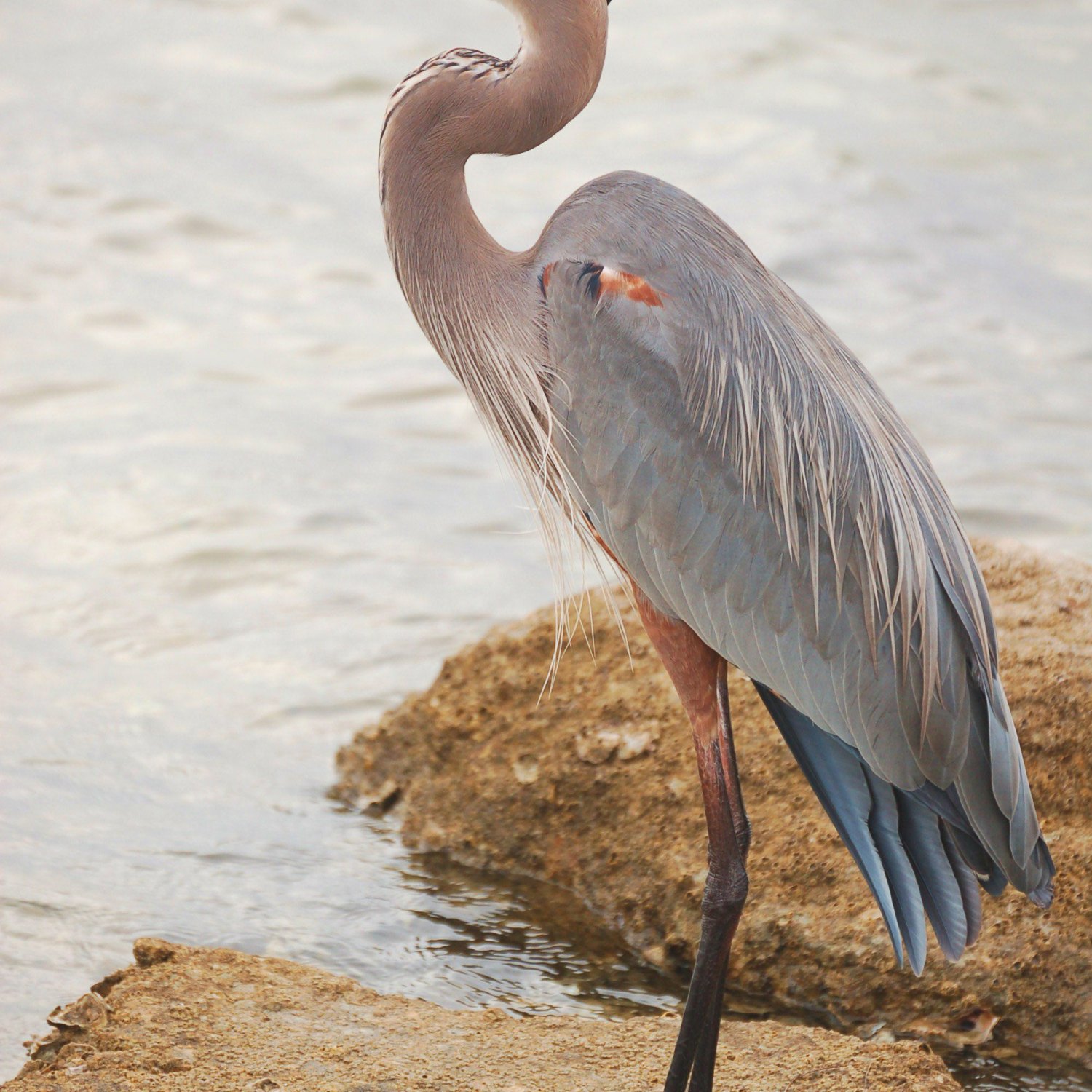
Great Blue Heron
3.2-4.5 feet (0.97-1.37 meters)
The Great Blue Heron is a majestic bird found across North America near bodies of water. It belongs to the Ardeidae family and can grow up to 4.5 feet long. With a tall, slender body, long legs, neck, and bill, it is a beautiful sight to see. Keep an eye out for this graceful creature on your next nature walk! #GreatBlueHeron #birdwatching #naturelovers
Animal Details Summary:
Common Name: Great Blue Heron
Kingdom: Animalia
Habitat: Wetlands, marshes, swamps, lakeshores, and coastal areas
The Amazing Great Blue Heron: A Majestic Bird of Wetlands and Coastal Areas
From its striking blue-gray body to its slender, elegant form, the Great Blue Heron is a bird that truly stands out in the animal kingdom. Found across North, Central, and South America, this bird is a common sight near bodies of water, from wetlands and marshes to lakeshores and coastal areas. With its scientific name Ardea herodias and common name Great Blue Heron, this bird has long fascinated birdwatchers, biologists, and nature enthusiasts alike. Let's delve into the world of this majestic bird and discover what makes it so remarkable Great Blue Heron.The Kingdom, Phylum, Class, Order, and Family of Great Blue Heron
Before we dig into the details of this amazing bird, let's first understand its scientific classification. The Great Blue Heron belongs to the Animalia kingdom, which includes all animals. It is further categorized into the phylum Chordata, which comprises animals with a spinal cord. Within the class Aves, the Great Blue Heron belongs to the order Pelecaniformes, a group of mostly aquatic birds in the family Ardeidae. This family also includes other herons, egrets, and bitterns.The Habitat of Great Blue Heron
One of the defining features of the Great Blue Heron is its habitat. As a wetland bird, it is perfectly adapted to live in and thrive in wet environments. This includes wetlands, marshes, swamps, lakeshores, and coastal areas. These birds prefer shallow, freshwater areas, but they can also be found in saltwater habitats Gerbil.One key reason why herons are so closely associated with wetlands is their feeding habits. As carnivorous birds, they rely primarily on fish, which can be found in abundance in wet areas. Their habitat also provides ample shelter and nesting sites, making it a perfect spot for the Great Blue Heron to call home.
The Feeding Method of Great Blue Heron
As mentioned earlier, the Great Blue Heron is a carnivorous bird, meaning it primarily feeds on other animals. Its diet mainly consists of fish, but it also consumes other small aquatic creatures like frogs, crustaceans, and insects. These birds use a variety of techniques to catch their prey, including standing still and waiting for fish to come into view, walking slowly through shallow water and using their sharp beaks to catch prey, and using their wings to create a shadow and attract fish towards them.One interesting fact about the Great Blue Heron's feeding habits is that they have a specialized technique for catching fish. They often hold their wings in a specific position, creating a canopy to shade the water and reduce glare, making it easier for them to spot fish. This goes to show just how well-adapted these birds are to their habitat.
The Geographical Distribution and Country of Origin of Great Blue Heron
The Great Blue Heron is a widespread bird, found in North, Central, and South America. It is a common sight in wetlands and coastal areas throughout these regions. In fact, it is the largest and most widespread of all North American herons. Its range stretches from Canada and the United States down to parts of Central and South America. These birds are also migratory, meaning they may move to different locations depending on the season.The Great Blue Heron's country of origin is generally considered to be the United States and Canada, as these are the countries from which it is most commonly found. However, its sheer size and range make it a notable bird in many other parts of the Americas as well.
The Location and Coloration of Great Blue Heron
As mentioned earlier, the Great Blue Heron is often found near bodies of water, making it relatively easy to spot in its natural habitat. These birds are not shy and can often be seen walking gracefully through shallow waters.One of the most striking features of the Great Blue Heron is its coloration. Its blue-gray body is a sight to behold, contrasted by a clean white face that stands out against the dark water. It also has a distinct black stripe above its eyes, which adds to its elegant appearance. Its eyes are a bright yellow, making it easy to spot in the water. These unique colors make the Great Blue Heron an eye-catching and captivating bird to observe.
The Body Shape and Length of Great Blue Heron
The Great Blue Heron's body shape is another feature that sets it apart from other birds. It is tall and slender, with long legs that allow it to wade through shallow waters with ease. Its long, graceful neck and long, pointed bill give it a regal appearance, adding to its majestic charm. These physical features make it perfectly adapted for its wetland habitat and reflect its prowess as a hunter.In terms of size, the Great Blue Heron is a relatively large bird. It measures between 3.2 and 4.5 feet in length, making it one of the largest heron species. Its impressive stature makes it an impressive sight to see in the wild, especially when it is in flight with its massive wingspan.
Conservation Efforts for the Great Blue Heron
Like many other bird species, the Great Blue Heron faces threats such as habitat loss, pollution, and disturbance by humans. This has led to a decline in their population in some areas. Fortunately, due to conservation efforts, the Great Blue Heron is currently considered a species of "least concern" on the IUCN Red list, indicating it is not at immediate risk of extinction.However, continued conservation efforts are crucial to ensure the continued survival of this beautiful bird. Steps like protecting and preserving wetland habitats, reducing pollution, and educating the public about the importance of these birds can all contribute to their sustainability in the wild.
In Conclusion
The Great Blue Heron is a remarkable bird that has captured the attention and fascination of people for centuries. With its stunning appearance, impressive hunting abilities, and strong presence in wetland habitats, it is truly a bird worthy of admiration. From the United States and Canada down to Central and South America, the Great Blue Heron is a notable species that adds to the diverse beauty of the natural world. Let's continue to appreciate and protect this majestic bird for generations to come.

Great Blue Heron
Animal Details Great Blue Heron - Scientific Name: Ardea herodias
- Category: Animals G
- Scientific Name: Ardea herodias
- Common Name: Great Blue Heron
- Kingdom: Animalia
- Phylum: Chordata
- Class: Aves
- Order: Pelecaniformes
- Family: Ardeidae
- Habitat: Wetlands, marshes, swamps, lakeshores, and coastal areas
- Feeding Method: Carnivorous
- Geographical Distribution: North, Central, and South America
- Country of Origin: United States and Canada
- Location: Across North America, usually near bodies of water
- Animal Coloration: Blue-gray body with a white face, black stripe above the eyes, and yellow eyes
- Body Shape: Tall and slender with long legs, a long neck, and a long, pointed bill
- Length: 3.2-4.5 feet (0.97-1.37 meters)
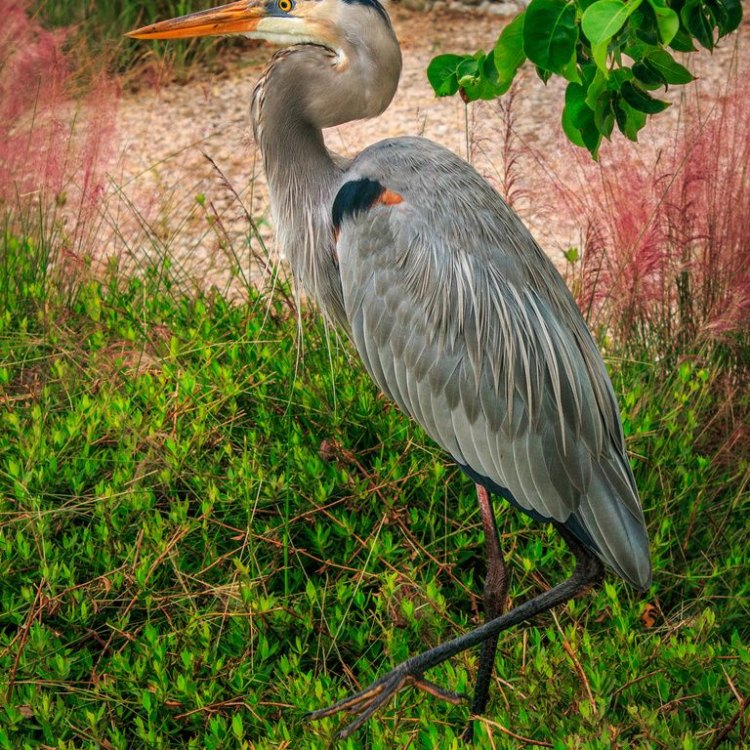
Great Blue Heron
- Adult Size: Large
- Average Lifespan: 15 years
- Reproduction: Sexual
- Reproductive Behavior: Males perform courtship displays to attract females
- Sound or Call: Loud croaking or squawking calls
- Migration Pattern: Migratory, with some populations residing year-round
- Social Groups: Solitary or found in loose groups
- Behavior: Patiently stalks prey before striking with its sharp bill
- Threats: Habitat loss, pollution, and disturbance
- Conservation Status: Least Concern (IUCN)
- Impact on Ecosystem: Maintains balance in wetland ecosystems by controlling fish populations
- Human Use: Tourism, birdwatching, ecotourism
- Distinctive Features: Large size, blue-gray coloration, long legs and neck, sharp bill
- Interesting Facts: Great Blue Herons can swallow fish whole, and their diet also includes amphibians, small mammals, and insects.
- Predator: Potential predators include raccoons, foxes, coyotes, and larger birds.
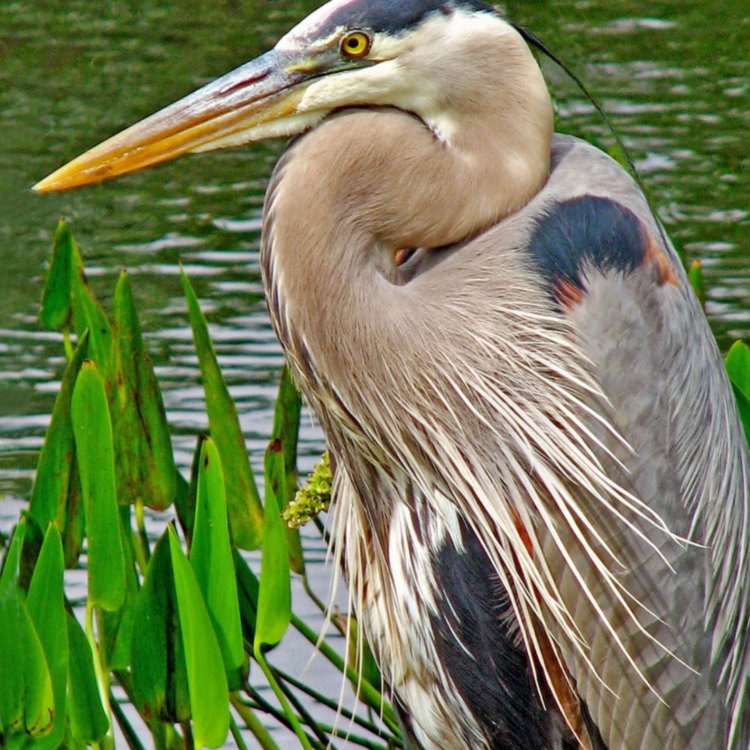
Ardea herodias
The Majestic Great Blue Heron: A Marvel of Nature
Nature is full of magnificent creatures that never cease to fascinate us. From the towering elephants to the graceful dolphins, each animal has its own unique characteristics that make them stand out. One such creature that commands attention and awe is the Great Blue Heron.With its stunning size, striking appearance, and fascinating behavior, the Great Blue Heron is a true marvel of nature PeaceOfAnimals.Com. Its presence is not only visually appealing but also plays a vital role in maintaining the balance of its ecosystem. Let's take a closer look at this majestic bird and unravel its exceptional features.
The Adult Size and Average Lifespan of Great Blue Herons
One of the first things that captures our attention about the Great Blue Heron is its size. These birds can grow up to 4 feet in height, making them one of the largest heron species in North America. The wingspan of a Great Blue Heron can reach up to 6 feet, allowing it to soar high in the sky with effortless grace.In terms of weight, Great Blue Herons can range from 4 to 8 pounds, depending on their age and size. Younger birds tend to be smaller in size, while older adults are larger and heavier. These birds have a long lifespan for their size, with an average lifespan of 15 years.
Reproduction and Reproductive Behavior of Great Blue Herons
Great Blue Herons are sexual reproducers, meaning they require both a male and female to produce offspring Giant Siphonophore. During the mating season, which typically occurs from March to April, the males perform elaborate courtship displays to attract females. The males will puff out their chest, flap their wings, and even dance as part of their courtship ritual.Females lay 2-7 eggs in a nest made of sticks and lined with grass and feathers. Both the male and female take turns incubating the eggs, which hatch after about 27 days. Once the chicks hatch, they are dependent on their parents for food and protection.
The Sound or Call of Great Blue Herons
The loud croaking or squawking calls of Great Blue Herons are a common sound in wetland areas. These birds use a variety of vocalizations that include squawks, croaks, and grunts to communicate with other herons and defend their territory. Their calls are loud and harsh and can be heard from a distance.During the breeding season, Great Blue Herons also use various calls in their courtship rituals to attract mates and defend their nesting sites. Their calls are an essential part of their communication, helping them to maintain their social structure and warn of potential threats.
The Migration Pattern and Social Groups of Great Blue Herons
Great Blue Herons are migratory birds, meaning they travel long distances between their breeding and wintering grounds. While some populations of Great Blue Herons reside in the same area year-round, others migrate to warmer climates during the winter. These birds have keen navigational abilities and use visual and environmental cues to guide them during migration.When not migrating, Great Blue Herons can be found in solitary or small, loose groups. While they are not highly social birds, they tend to congregate in areas where food is abundant and nest in colonies during the breeding season.
The Hunting Behavior of Great Blue Herons
Great Blue Herons are highly skilled hunters and use their sharp bill to snatch their prey from the water's surface with lightning speed. These birds are patient stalkers, spending long periods motionless, waiting for the perfect opportunity to strike. Their long legs and necks give them an advantage, allowing them to wade through shallow water and reach prey that other birds can't.Great Blue Herons are opportunistic and will eat a variety of prey, including fish, amphibians, small mammals, and insects. They can also swallow fish whole, making them a formidable predator in their ecosystem.
Threats to Great Blue Herons and Their Conservation Status
While Great Blue Herons have a relatively high conservation status with least concern by the International Union for Conservation of Nature (IUCN), they still face various threats. Habitat loss due to human development, pollution, and disturbance are the primary threats to these birds. Human activities like dredging, shoreline development, and deforestation impact the availability of suitable wetland habitats for these birds.To protect Great Blue Herons and their habitat, various conservation efforts are in place. These include habitat restoration, monitoring and research, and public education to raise awareness about the importance of these birds in maintaining wetland ecosystems.
The Importance of Great Blue Herons in Maintaining Ecosystem Balance
Great Blue Herons play a vital role in the balance of wetland ecosystems. As top predators, they keep fish populations in check, preventing them from becoming overpopulated and depleting vital resources. This allows other species to thrive, maintaining a healthy and diverse ecosystem.Additionally, Great Blue Herons also contribute to nutrient cycling in their habitat. Their droppings provide a source of nutrients for plants and other organisms, further supporting the ecosystem's balance.
Human Use and Fascination with Great Blue Herons
The Great Blue Heron's size, striking appearance, and behavior have captivated humans for centuries. These birds have been a subject of fascination in literature, art, and mythology, with various cultures associating them with wisdom, patience, and grace.Today, Great Blue Herons also have economic value as a tourist attraction and for birdwatching and ecotourism. Many people travel to wetland areas to catch a glimpse of these magnificent birds in their natural habitat.
Distinctive Features and Interesting Facts about Great Blue Herons
There are several distinctive features of Great Blue Herons that make them stand out from other heron species. As their name suggests, their blue-gray coloration sets them apart, along with their long legs and neck and sharp bill. Their long, dagger-like bill is a primary tool in their hunting arsenal, perfectly designed to catch their prey.Aside from their distinctive features, Great Blue Herons also have various interesting facts that make them unique. Did you know that they can partially retract their necks into an "S" shape when in flight? This adaptation allows them to conserve energy during long flights. Also, Great Blue Herons can fly at altitudes of up to 4,000 feet, making them one of the highest flying birds.
The Potential Predators of Great Blue Herons
Despite their size and impressive hunting abilities, Great Blue Herons also have predators of their own, primarily when vulnerable during the breeding season. Potential predators include raccoons, foxes, coyotes, and larger birds like eagles and larger heron species.To protect themselves and their young, Great Blue Herons have developed various defense mechanisms. They use their sharp bill to defend against predators and have been known to engage in aerial battles with other birds to protect their nests.
In Conclusion
In conclusion, the Great Blue Heron is a magnificent creature that never fails to leave us in awe. With its striking size, appearance, and behavior, it's no wonder that these birds have been a source of fascination for centuries. As essential members of their ecosystems, we must continue to protect and appreciate them for generations to come. Their presence is a reminder of the beauty and diversity of nature and the interconnectedness of all living beings.
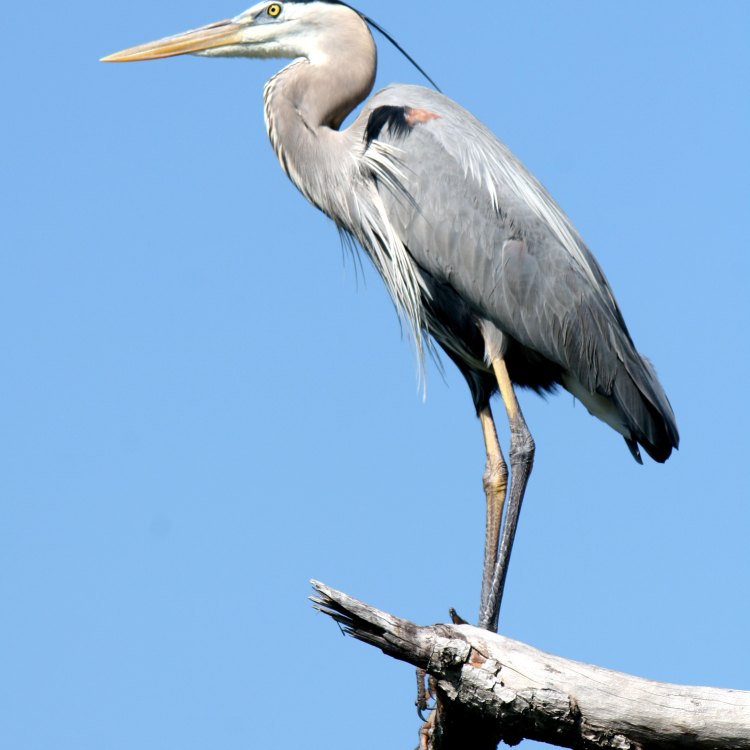
The Amazing Great Blue Heron: A Majestic Bird of Wetlands and Coastal Areas
Disclaimer: The content provided is for informational purposes only. We cannot guarantee the accuracy of the information on this page 100%. All information provided here may change without prior notice.

